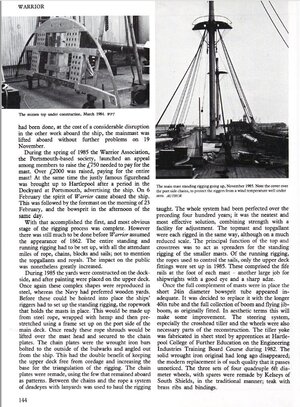- Joined
- Nov 8, 2020
- Messages
- 16
- Points
- 58

The books about rig and rigging which I can recommend
I can recommend the book by David Steel, from which I used individual links when I was drawing the plan for the schooner brig
Prince de Neufchatel and completing the booklet with tables about rig and rigging.
It s available online for free > https://maritime.org/doc/steel/ <
The next very helpful is book >Young sea officer sheet anchor,where you can find plenty basic informationabout rig and rigging.
It is for free too, you can download from>Interhet archive >> https://archive.org/details/youngseaofficers00leve/mode/2up
If you have the chance, I recommend the book , which can still be found in an English version> by Petrejus, E.W. MODELLING THE BRIG-OF-WAR "IRENE"
Rich materials for the construction of a model of a brig from around the middle of the 19th century with tables about model rig and rigging
> https://www.biblio.com/modelling-the-brig-of-war-by-petrejus-e-w/work/2771074 <
Very useful is next book by George Biddlecombe>the Art of rigging ... -
> https://www.bookdepository.com/Art-...be/9780486263434?ref=pd_detail_1_sims_b_p2p_1
I can recommend the book by David Steel, from which I used individual links when I was drawing the plan for the schooner brig
Prince de Neufchatel and completing the booklet with tables about rig and rigging.
| Folks, The Elements and Practice of Rigging And Seamanship, 1794, by David Steel, is a comprehensive English textbook of rigging, seamanship and naval tactics. A key reference for those interested in the age of Nelson. Although at times difficult because of its fine detail, it will reward those that search through it to understand the technology of the era. |
It s available online for free > https://maritime.org/doc/steel/ <
The next very helpful is book >Young sea officer sheet anchor,where you can find plenty basic informationabout rig and rigging.
It is for free too, you can download from>Interhet archive >> https://archive.org/details/youngseaofficers00leve/mode/2up
If you have the chance, I recommend the book , which can still be found in an English version> by Petrejus, E.W. MODELLING THE BRIG-OF-WAR "IRENE"
Rich materials for the construction of a model of a brig from around the middle of the 19th century with tables about model rig and rigging
> https://www.biblio.com/modelling-the-brig-of-war-by-petrejus-e-w/work/2771074 <
Very useful is next book by George Biddlecombe>the Art of rigging ... -
> https://www.bookdepository.com/Art-...be/9780486263434?ref=pd_detail_1_sims_b_p2p_1





